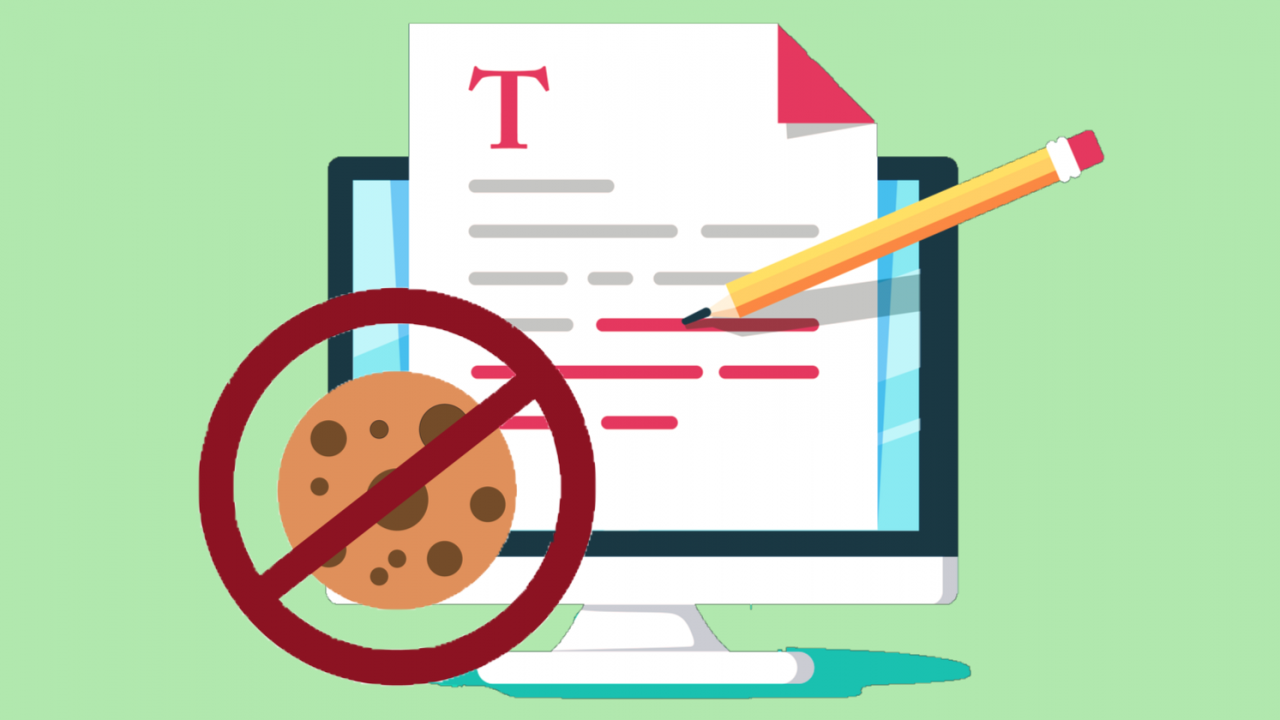Server-side measurement: What is it really good for?
While it is not a one-size-fits-all solution to the demise of browser cookies, server-side measurement is still worth considering.
With the end of third-party cookies looming over an ever-shifting horizon, marketers have been scrambling to figure out how to hold onto their precious data. There appears to be a savior in the form of server-side measurement.
However, not all stakeholders are aligned on what this tracking technique really brings to the table. And often, when people talk about server-side, they mean different things.
In this article, we’ll cover server-side measurement in an adtech and analytics context and its role in today’s changing data landscape.
What is server-side measurement?
Server-side measurement is based on sending data directly from a server you own and control to the servers of the platforms you leverage for advertising and measurement, cutting out the middleman that is the browser your visitors use to access your website, and allowing direct tracking and measurement of outcomes like clicks and conversions.
Server-side tracking and the cookie apocalypse
Browsers are not just any middlemen. They are the reason for the demise of cookies. They control how certain cookies behave and therefore control what you can and cannot do with them.
Google again delayed their post-cookie plan, which is understandable given the tech giant heavily depends on third-party cookies for targeted advertising — more so than any major adtech player.
However, Google’s follow-up plans are in the works. Browsers that are already tough on cookies command a significant market share. Chrome might dominate the browser market with almost two-thirds of the pie, but Safari and Firefox own a respectable slice themselves.
The so-called “cookie apocalypse” does not only impact third-party cookies. Safari and Firefox are already limiting certain aspects of the first-party cookies set directly by your website.

What do cookies have to do with this?
To discuss what server-side measurement achieves for marketing and analytics, we need an understanding of the purpose of first-party and third-party cookies.
Let’s start with a spoiler of sorts — server-side measurement really only solves the impact on first-party cookies, and even that is a fleeting promise.
The popularity of first-party cookies
First-party cookies essentially serve as the memory of the visitor’s browser and, by extension, your website.
A lot of important functionalities rely on first-party cookies (or their more modern siblings, such as localStorage), including:
- Remembering you were logged in so you don’t have to log in for every new page load.
- Keeping the items in your basket as you whizz through the checkout funnel.
Most consent management platforms even store your consent preferences in a first-party cookie.
Third-party cookies’ bad rap
Meanwhile, third-party cookies get a bad rap — and not entirely without justification. When a third-party cookie is created, it is accessible by the party that placed it on all the websites you visit. Such access allows:
- Adtech platforms to not only stitch your actions across a single website but also view your entire browsing experience across all websites.
- Tech giants to decide you are in a certain profile, enabling targeted upper-funnel acquisition marketing.
What role does server-side measurement play in all this?
Now that we understand the role of cookies a bit better, let’s think about what server-side measurement brings to the table.
The first-party cookie is significantly reduced in its lifetime. In general, cookies are limited to a maximum of seven days on certain aforementioned browsers, so analytics and adtech platforms have a harder time remembering customers’ past actions and adding current actions to create consistent profiles.
A user must visit a website more frequently or they might have their cookies reset and be counted as a new user. Since new vs. returning user metrics are entirely dependent on this matter, this element is a major consideration for brands looking to:
- Strengthen both advertising and audience management.
- Attain accurate data collection from their web analytics tools.
One benefit of server-side measurement is setting first-party cookies to circumvent the seven-day cap. Server-side will return some ability to retain memory about your website visitors’ actions, enabling more accurate measurement for analytics and a longer timeframe to establish your retargeting audience design.
Do you want to retarget customers who spent more than $ 1,000 and have not returned to the website in the past 28 days? This is simply impossible with a seven-day cap. Here, server-side tracking may be the solution.
Unfortunately, that’s it. That’s all server-side measurement does to counter the cookie apocalypse. It won’t bring third-party cookies back.
Adtech platforms (and, by extension, your brand) still can’t “find” and “target” people across other websites. The platforms’ ability to create a profile based on actions across different websites is equally gone for good (or will be gone for good when Chrome finally joins the party).
It is also worth noting that Apple is designing a new feature where first-party cookies set by the majority of server-side solutions will also be impacted by the seven-day cap. It will most likely be in 2023, according to various reports. So, are we back to square one?
So, what is server-side measurement good for?
In reality, server-side measurement is not a one-size-fits-all solution to the demise of browser cookies or a way to get your audiences back.
Now that you know better than to wish for a miracle solution, let’s drill into the tangible benefits of implementing server-side measurement.
1. Boost your website performance and monetization prowess
A site’s conversion rate is correlated to its load speed, according to a study by Fifty-five and Deloitte. Server-side measurement supports this by enabling you to have fewer requests in the visitor’s browser.
These requests can be significant factors in a website’s load performance as they contribute to the overall load of the page. Simple maths: {time to load} = {load of website} / {speed of internet}.
2. Control the data flow to analytics and advertising platforms
Server-side systems give you an additional step to interrupt and modify a request going to its final destination. This enables three main use-case families:
Remove sensitive information
In contrast to enabling more data collection by advertising platforms, server-side measurement allows you to modify a request that will end up in the advertising or analytics platforms’ servers.
Does your company’s Data Protection Officer (DPO) think you must redact a certain parameter’s value to comply with the latest and greatest regulation? Server-side measurement to the rescue.
Do you need to mask personally identifiable information (PII)? Server-side systems can enable you to catch the request mid-way and get the job done.
With new regulations coming in and existing ones hardening their stance on your favorite tools, it is vital to stay compliant and respectful of your visitors’ wishes. Server-side can help with this. At the same time, you can maintain some capabilities in measurement and optimization.
Enrich data
Having control does not only mean removing information but also adding important data points. You can enrich advertising and analytics data requests with data stored in your own systems.
Google’s enhanced conversions and Meta’s advanced matching are some examples that can be greatly facilitated by a server-side system. They involve essentially sending hashed versions of your logged-in user data, such as email addresses, to enable better matching and audience management.
Increase security
Essentially a combination of the two points above, you can set your data collection to mask certain sensitive information on the client side and later add them on the server side.
Whether it is your Google Analytics property ID or a potentially sensitive PII, it is better to exclude it from the naked request visible in the browser.
3. Mitigate ad blocker impact on analytics
Most ad blockers also block major web analytics functionality on a website. An unfortunate side effect of this is losing a portion of website visitors in your reports, even if you were not involved in audience-related activities.
A server-side measurement domain is unlikely to be auto-blocked by these tools. With third-party cookies (almost) out the window to disable retargeting anyway, it could be worth using server-side to improve visibility in such a manner. (Obviously, as long as your visitors consent to web analytics measurement.)
4. Take advantage of advanced adtech functionalities
Due to the increased data flow (mainly from setting longer first-party cookies and bypassing ad blockers), adtech platforms can get data from more visitors thanks to server-side measurement. To incentivize its adoption, many platforms have gated certain important features behind the enablement of server-side.
For example, Meta won’t let you do any conversion lift testing (their way of A/B testing to understand a campaign’s incremental impact on business outcomes) unless you have implemented CAPI, which is their name for server-side Meta “pixel” implementation.
Server-side measurement and the privacy-first era
Server-side measurement may not be the panacea some believe it is to counter the end of browser cookies. It’s important to know the function of cookies and the difference between first and third-party cookies to understand the realistic capabilities of server-side implementations.
While it may not be a one-size-fits-all solution, the good news is there are various strong benefits to server-side measurement worthy of investigation in the new privacy-first internet.
But let’s make sure we can see the wood from the trees (and the cookies).
The post Server-side measurement: What is it really good for? appeared first on MarTech.
(28)



